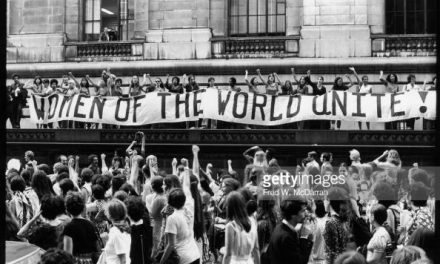
Building Sets & Girls’ Building Sets

For many years, retail stores have separated any item it can by male and female as far as display and marketing tactics go. Hair products, hygienic products, medical supplies, and many other products are organized and marketed differently in retail stores by gender. Today’s society leans on labels quite a bit. Dating back to hundreds of years ago, there was only male and female. Then, more labels came to rise: transsexual, cross dresser, etc. Now, there is a label that makes labels themselves unnecessary.
Genderqueer means a person does not identify as either male or female. Genderqueer falls under the transgender category. To break this down from the basics, transgender means that a person does not identify with the gender the he or she was assigned at birth or would typically by assigned at birth. Genderqueer should not be confused with gay or any other term used to describe a person’s sexual orientation. Genderqueer only describes a person’s gender identity.
This term is typically interchanged with gender-nonconforming, bi-gender, non-binary, or being fluid.
An easy way to describe genderqueer is by thinking of a river. At one end of the river, you have the label male. At the other end of the river, you have the label female. There are so many different currents and activities that go on between the beginning and end of a river. Genderqueer is everything between male and female and everything between the beginning and end of a river.
Target decided to put an end to gender separation in its toy department. The toy department is the most symbolic department Target could have taken this step with. By merging and not separating male and female products in the toy isle, Target is taking a stand on not only separating genders in retail stores, but also forcing children to identify as male or female: “Right now, our teams are working across the store to identify areas where we can phase out gender-based signage to help strike a better balance”, stated spokeswoman Molly Snyder.
Target threw out genders in other departments, also, but the toy department was hands down its most influential change. The company changed signage in its toy department from “Building Sets” and “Girls’ Building Sets” to just say “Building Sets”. Building sets are building sets whether they are pink or blue. Signs like these say more when looked beyond the surface. The building sets sign, for example, suggests that building sets are meant for boys, but that Target has modified building sets so that girls may use and appreciate them, also. By changing its signs to simply say “building sets”, Target is letting boys know that the building sets are not meant for them and that they do not have to like building sets. Target is letting girls know that they can like building sets and that the sets do not have to be pink for girls to enjoy them.
Target also took a step forward in the toy department by getting rid of its pink and blue paper and signage that represented which toys were for girls and which toys were for boys. Once again, the company stepped out of society’s traditional suggestion that pink is meant for girls and blue is meant for boys.
People who do not identify with either male or female grow up understanding that not being male or female is wrong. This puts people in a dilemma that is difficult to come out of later on in life. Not only are these people forced to live their lives in a way they do not wish, but these early social norms make it even more difficult for genderqueer people to leave their male and female identities because they did live their childhoods as either male or female.
“Biologically, we’re not hardwired to want pink or blue, so much of this is from social conditioning that happens as a result of generations of [this] being passed on to us,” said Dr. Sue Varma, a psychiatrist. Mental health experts suggest that by not forcing children to label themselves as male or female is a positive step in child development.
Though many Target customers took to social media in outrage about the company’s decision, most took to social media in delight and expressed thankfulness to the decision.
As far as the company’s sales are concerned, business is great. All of Target’s top selling toy brands including LEGO and NERF sold out in minutes on Black Friday.
Therefore, it would be very difficult to argue that the company’s decision to make its toy isle gender-neutral was a bad decision. The company’s sales are not only up, but they are up specifically in the toy department.
Target crafted its statement about gender neutralizing the toy department well. Not only did the company express genuine care for children in its statement, it also pointed out that they have received requests regarding this decision and that there is a demand for it: “We tried to look at what makes sense and what doesn’t,” Snyder stated, “We heard you, and we agree”.
Though it was a risky public relations move to take such a drastic step towards gender fluidity and accepting the genderqueer label, Target has not seen a negative impact in its sales.
Toys are meant to entertain children and teach them basic mechanical and intellectual skills. If it is each generation’s job to let the following generation flourish with new ideas to continue to progress intellectually, why is society forcing such firm roles onto the next generation?
Hopefully, other companies will soon take a step forward with Target.








